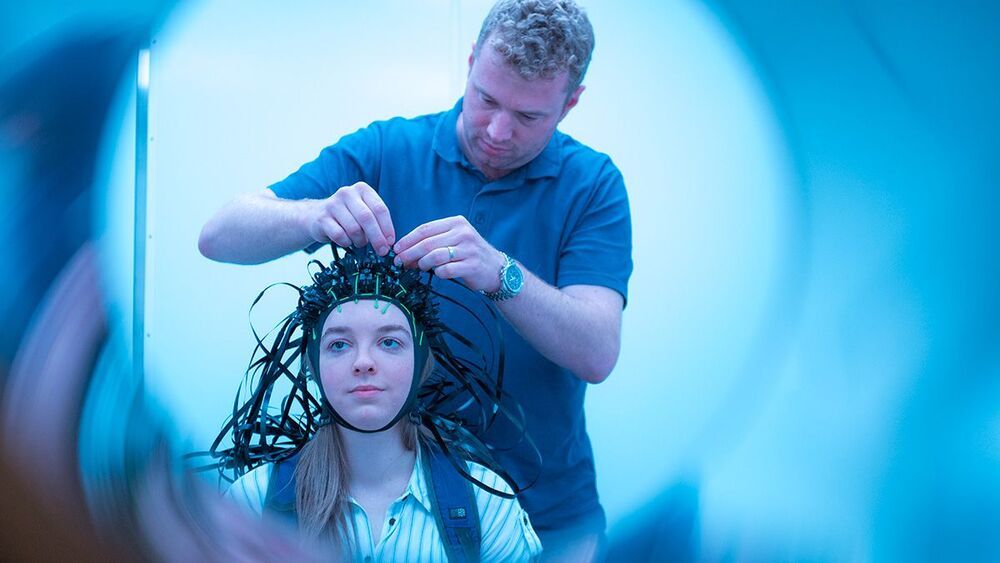Hannah Coleman and Matt Brookes explain how quantum-enabled MEG scanners can yield new insights into the functioning of our brains.




Nikolai Kardashev, creator of the civilization ranking scale, outstanding space explorer, specialist in experimental and theoretical astrophysics and radio astronomy, Doctor of Physical and Mathematical Sciences, Director of the Astro Space Center of the Lebedev Physical Institute, died in August 3, 2019. The Russian scientist was 87 years old.
The scientist’s most famous work is the Kardashev Scale — the cosmic civilization ranking system. As part of the Search for Extraterrestrial Intelligence (SETI), he proposed a model of cosmic civilisations and calculated the scale of ranking civilisations
The Kardashev Scale
In 1963, he studied the quasar CTA-102. It was the first contribution of Soviet scientists to SETI, since the radio source CTA-102 was first assumed to be evidence of an extraterrestrial civilization.
In his paper ‘Transmission of Information by Extraterrestrial Civilisations’, published in 1964, Kardashev explored the idea that other galactic civilisations may have existed for billions of years before ours, so they would be far more advanced. He proposed a theoretical scale of technological development of civilisations based on the amount of energy that civilization is able to utilize. According to the theory, there are 3 main types of advanced civilisations:
Type I: Planetary Civilization
A civilisation that can use and store all the energy available on its planet — a small fraction of a star’s energy emissions that reach the surface. In the case of Earth and the Sun that’s about 1016 watts. For now, humanity has not quite reached Type I civilisation status, consuming only about 1012 watts.
Is a postdoctoral scholar at Tufts University, where she conducts research in their Human Robot Interaction Lab (https://hrilab.tufts.edu/).
With a background in psychology and the social sciences, Dr. Chita-Tegmark is interested in topics at the intersection of technology and psychology, such as using artificial social agents in healthcare and the impact of such emerging technologies on human social interactions and well-being.
Dr. Chita-Tegmark has her Ph.D from Boston University in Psychology and Developmental Sciences, and she is an alumna of the Harvard Graduate School of Education, where she spent time studying role of social information in children’s lives, how social information influences the way children cooperate and engage in strategic decision-making, as well as on projects related to the development of social attention and language skills in children with Autism Spectrum Disorder (ASD).
Dr. Chita-Tegmark is also a Co-Founder of the Future of Life Institute (https://futureoflife.org/), a non-profit research institute and outreach organization that works to mitigate existential risks facing humanity, including those from advanced artificial intelligence (AI), to bio-engineering, to autonomous weapons, and to help promote positive uses of technology.
Fascinating!!
By Seán Doran© / Meditate on the beauty of our home.
Music by Phaeleh / https://phaeleh.bandcamp.com/
Time-lapse photography from ISS converted to real-time video.
Based on ESRSU image archive / eol.jsc.nasa.gov.
‘Orbit’ is the first part of the ‘Orbit Trilogy’
Part 2: https://youtu.be/8gPzIKe92-M
Part 3: https://youtu.be/x9vWyEPAboM
This film is protected by copyright. Illegal distribution is prohibited.

Unsurprisingly, artificial intelligence is a small part — albeit an important one — of a successful product management strategy.

SpaceX launched a 16-story prototype of its Starship Mars rocket system 10 kilometers (6.2 miles) above Boca Chica, Texas on Tuesday.
